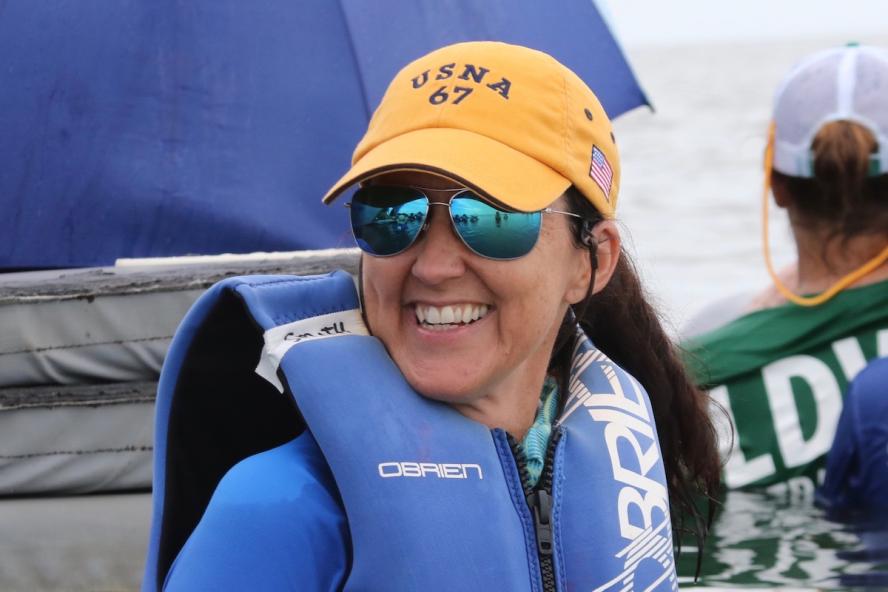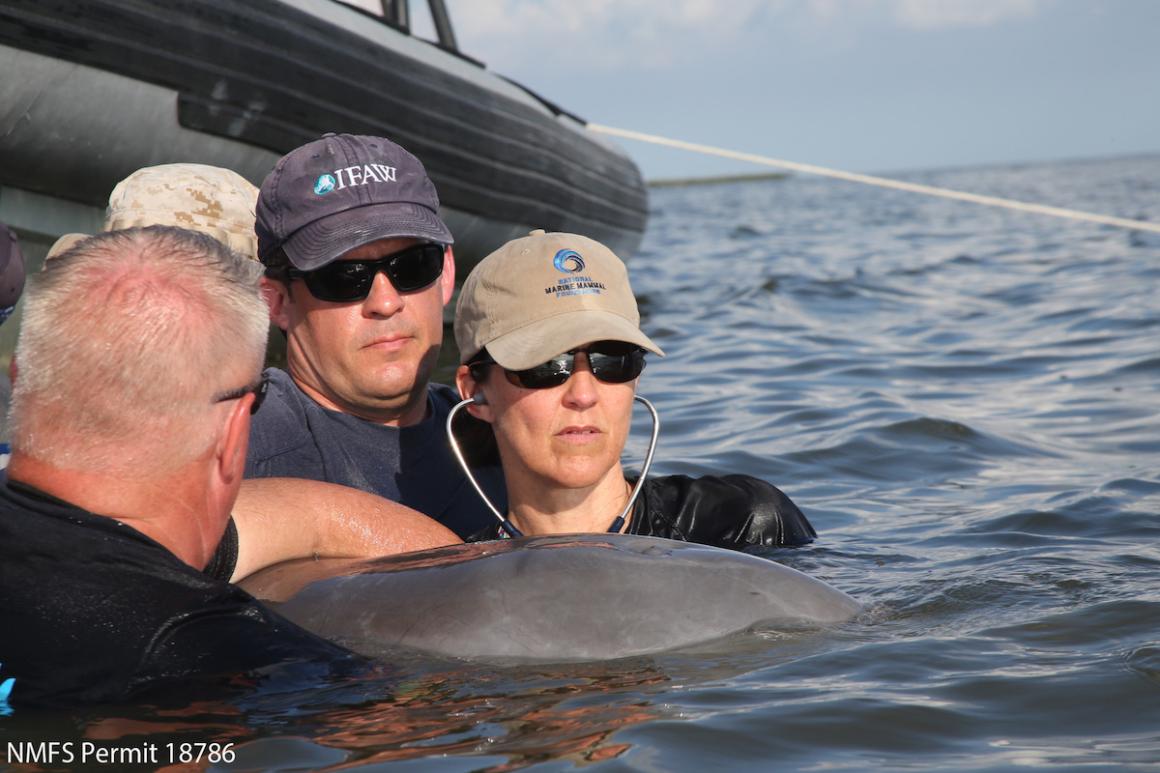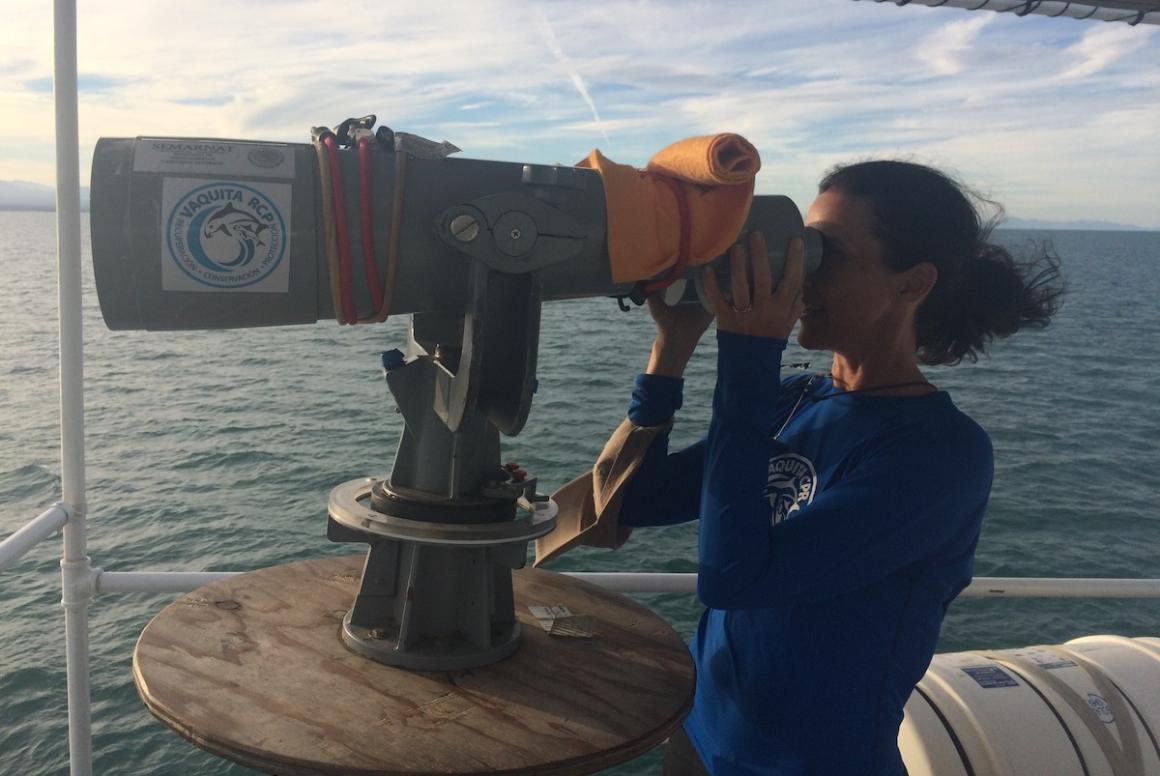-
About
- Leadership & Faculty
- News & Events
-
Academics
- Graduate
- Advanced Clinical Training
- Continuing Education
- Academic Offices
-
Student Life
-
Research
-
Hospitals & Clinics
- Emergency Care
- Hospital Services
-
Community Outreach
- Volunteer
First person: Cynthia Smith, V99
Animal Story-teller, Advocate, and Problem-solver Cynthia Smith is president of National Marine Mammal Foundation in San Diego

Cummings School of Veterinary Medicine recently caught up with Cynthia Smith, V99, for a Q&A.
Where’s home and where did you grow up?
I was born in Cocoa Beach, Florida, but grew up in Seabrook, Texas, just down the road from NASA where my dad worked. My future husband, Scott, and I went to the same high school and his dad also worked at NASA. That was pretty common, actually. Many of our friends and neighbors were connected to the space program, which was an exciting way to grow up. We have settled in San Diego, and we both consider it our home. We have two teenagers who are wonderful humans and great friends, and we care for an aging, rescued hound-dog that we lovingly refer to as our ‘good bad dog’.
Could you share your education and the degrees you’ve earned?
I have a B.S. in biomedical science from Texas A&M University. For my last semester, I moved home to finish my degree at Texas A&M’s Galveston campus so I could help my mom care for my dad, who was undergoing cancer treatment.
I earned a D.V.M. from Cummings School of Veterinary Medicine at Tufts University and completed a veterinary thesis in aquatic biomedicine with Dr. Carol Reinisch, who had a joint appointment at Cummings School and the Marine Biological Laboratory in Woods Hole. I spent a couple of summers in Woods Hole working on my research project in her laboratory, which was pretty magical. The town comes alive in the summer with grad students, fellows, and visiting scientists.
I later did post-graduate work at Harvard Business School, Harvard Kennedy School, Harvard University, and UC Berkeley Haas School of Business. I love to learn and am often seeking new educational opportunities. For the past decade or so, I’ve been focusing on nonprofit management and leadership.
My first executive education course was Strategic Perspectives in Nonprofit Management at Harvard Business School with Dutch Leonard as the primary professor. It was one of the best courses I have ever taken, and that is saying a lot given how much I loved the vet school curriculum. Maybe it was because I was so hungry for nonprofit knowledge, as I was already in a position of leadership at the NMMF… or maybe it was Dutch’s style… or maybe it was the case-study approach to teaching that resonated with me (kind of like Tufts’ problem-based learning)… or maybe because we were housed in dorms with other executives that were also wanting to develop and grow, which made for great conversation. After that course, I knew there was much more I had to learn, beyond medicine, that was important to my development as a leader.
Why did you choose Cummings School and how did the education and experience help you personally and professionally?
After graduating from Texas A&M, I landed a research technician position at Wake Forest University’s Bowman Gray School of Medicine in the Positron Emission Tomography Center. I knew on my first day on the job that I wanted to go back to school. I liked the job, but I was surrounded by MDs, PhDs and DVMs, all trying to do good things … and it was inspiring.
I started ordering brochures from different vet schools and I remember the day I received the Tufts vet school packet. One of Tufts signature programs at the time was aquatic biomedicine. As I reviewed the information, I remember telling my husband with certainty that I wanted to go to Tufts, join the aquatic biomedicine program, and become a marine mammal veterinarian. So that’s what we set out to do and, thanks to the support of my husband, that’s what happened.
Do you have any mentors from Cummings School and how did they help you?
Dr. Carol Reinisch was my primary mentor at Tufts, and she was a true force of nature. She was extremely tough but equally supportive, which was a great combination. She challenged me to develop my own ideas and solve problems with whatever resources I could find. She encouraged me to talk to senior investigators and seek out their guidance. She taught me how to write, mainly with the generous use of her red pen, which I have come to appreciate more with time. She also encouraged me to write my own grants and seek my own funding. She truly prepared me for life after veterinary school and for pursuing a career in veterinary science.
How did your career lead you to your current position at NMMF?
When I was at Tufts, I was encouraged to attend the International Association of Aquatic Animal Medicine (IAAAM) annual meeting to share the results of the research I had been conducting with Dr. Reinisch.
I met Dr. Sam Ridgway of the Navy’s Marine Mammal Program at my first meeting. Sam was a founding member of IAAAM and even though he was already a legend, he always made himself available to the students. I was fortunate to attend that first meeting with another one of my mentors, Dr. Howard Krum, who was the head veterinarian at the New England Aquarium and an adjunct faculty member at Tufts. Howard introduced me to Sam, and I was amazed that Sam remembered me from then on. Turns out, that was characteristic of Sam. He was eager to meet students and encourage them on their career path, and he remembered most if not all of them.
When I was finishing vet school, I applied for an externship with Sam and the Navy team, and I remember that time very fondly. During the days, I shadowed the clinicians as they cared for the Navy’s dolphins and sea lions, and in the evenings, I worked on a cetacean neuroscience project for Sam. I came back to do a post-doctoral fellowship in 2000, and was then hired as a Navy Marine Mammal Program veterinarian and scientist in 2001.
In 2007, I was asked by Navy leadership to help Sam launch a nonprofit, the National Marine Mammal Foundation. I served as the executive director, with Sam as the president, from 2010 to 2022. Sam stepped down this past summer and asked me to take over as president. He passed away just weeks later, and I am still trying to adjust to life without him. He was my mentor, my friend, and he also became my family. I miss him dearly.
What are you most proud of about your work?
I am most proud of how our nonprofit has grown over the past decade and how it supports our team to do great things for marine mammals. We started with just about a dozen of us, and now we are 150 strong. We’ve examined and cared for hundreds of animals, published hundreds of papers, and we’re educating thousands of children and adults. That’s amazing to me, and I don’t take a single second of it for granted.
Overall, our team has been studying the long-term health impacts of the Deepwater Horizon oil spill on dolphins in the northern Gulf of Mexico. Our medicine and science has greatly enhanced our understanding of how oil negatively impacts dolphin health. We communicated our findings to the public through storytelling. Our team was featured in a documentary series called Dispatches from the Gulf.
Our team was asked to lead the urgent attempt to rescue vaquita porpoises from extinction. The effort brought together 90 scientists from nine countries, and although the rescue attempt was unsuccessful, we now have vaquita cells and gametes in the Frozen Zoo at the San Diego Zoo Wildlife Alliance. We also participated in another storytelling effort, with the documentary Sea of Shadows, which tells the complex story surrounding vaquita conservation efforts on the international stage.
Our team has published 300 papers over the past decade, which encompass discoveries in marine mammal medicine, our improved understanding of bioacoustics in the ocean environment, sophisticated modeling efforts to predict population trajectories for at-risk species of marine mammals, and more. These papers are the product of numerous collaborations and partnerships, which brings out the best in our team. We strongly believe in the power of collaboration and we pride ourselves in building human relationships to benefit marine mammals.
With your appointment as NMMF president, what’s next for you, personally and/or professionally?
Since Sam passed, I have been feeling a new sense of urgency and an intense level of focus. I don’t want to waste time on things that aren’t going to have a big impact—for an animal, a species, a community, or an ecosystem. I have a new sense of clarity.
We have big problems to solve, and we need to collaborate and communicate with each other, and with the public, to solve those problems. I want to help tell the animals’ stories, and when needed, help sound the alarm on their behalf. I also want to support every member of our team in doing the same, so that we have a whole army of passionate, educated advocates out there. And I want to create a safe space to get our work done, so that our team is willing to take risks and work outside of their comfort zones.
When we go big and fail, we can come home, be supported, and regroup for the next effort. When we go big and succeed, that means we discovered something incredible or solved a major problem or maybe even saved a species. That’s what I hope is next. That’s what I’m working toward.

